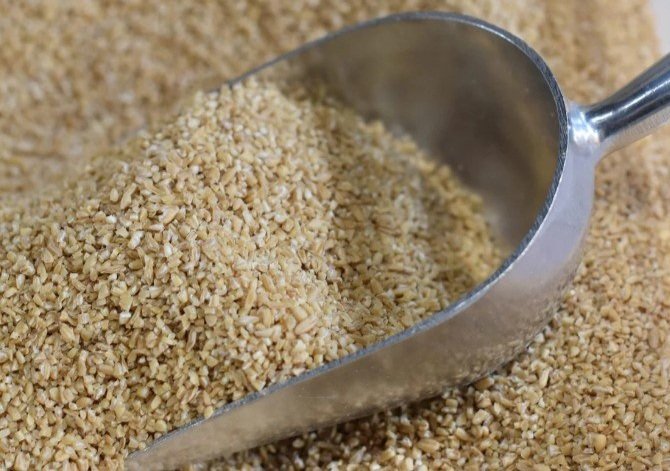The Worlds Most Poisonous Food in the World!
/When we were incredibly young, my siblings and I used to do one thing. We had a tree in our garden that grew these "Snake berries." Picking those berries, we would hurl them at one another. We have used those berries against each other in the past to lure each other away from us and the people we were with at the time. What is the most poisonous food in the world, and why? I asked myself after remembering the time when my siblings and I threw poisonous berries at one another.
I never had to worry about anything in my food growing up because I did not have allergies, but if you have, you undoubtedly already know how scary it is to worry about cross-contamination or if your food wasn't handled properly, which gets me to the top 5 list of the most dangerous foods.
Fugu
A puffer fish called fugu is eaten as a delicacy in Japan after some extremely dangerous sections have been cut away.
Even though there are numerous competing stories regarding its precise origin, fugu has a long history in Japan. Consumption started to spread more broadly around 130 years ago. A legislation banning the consumption of fugu was enacted in the 16th century reacting to a spate of fatalities caused by the fish's toxicity. The prohibition rule was overturned after the time's prime minister, Ito Hirobumi, lauded fugu's flavour. Since then, other initiatives have been taken to guarantee the security of fugu consumption.
Ackee fruit
Ackee, the native fruit of Jamaica, is a delicious but dangerous treat. To be consumed, ackee must be completely ripe and let to naturally open on the tree because unripe ackee contains the toxin hypoglycin.
Ackee originated in Ghana, and historians say that it most likely arrived on a slave voyage in the middle of the eighteenth century. The name ackee is akin to the word's original name in the Twi language of Ghana: ankye. When mature, the cream-colored revelation has 3 or 4 pieces. This is the bit you can eat but it only tastes good when it's ripe; if you eat it before it's ready, it's poisonous.
Sannakji
A raw Korean delicacy called hoe that is served right away and includes a young, live octopus that has been chopped up into little pieces.
According to documents, Sannakji has been drunk in Korea since the Three Kingdoms era, possibly as early as 57 BC. Because of their diminutive size, the common Korean octopus, known as nakji, sometimes known as "baby octopus," is used to make it. Additionally, because Sannakji is raw, there is a small but real chance that eating it will make you sick. It is obviously illegal in many nations, including the UK, due to the possibility of choking and food poisoning.
Hákarl
Hákarl is an Icelandic national dish made from a Greenland shark — or other sleeper shark — that has been cured using a specific fermentation technique, and hung to dry for four to five months. Hákarl is an acquired taste due to its strong ammonia-rich smell and fishy flavour.
Hákarl's history is fairly hazy, despite the fact that it is commonly connected with the Viking age. Sharks were once thought to be foes or, at most, a source of fat for use as a lubricant. Indeed, the meat of the Greenland shark is deadly and can cause intoxication for several days after consumption.
Cassava
Although cassava, a tropical root crop related to taro and yam, is frequently used to make cakes, chips, juice, and pudding (or "tapioca"), its leaves and roots can produce lethal cyanide. Cassava must be properly prepared before canning, eating, or serving in order to avoid poisoning.
The Portuguese introduced cassava, a root vegetable originally from tropical America to Africa, in the Congo basin in about 1558. if they are not adequately detoxified by soaking, drying, and scraping before eating you could be poisoned.
And those are the top five toxic foods on the planet, some of which are still consumed today despite being illegal in some countries. They all have their own culture and distinctive flavours, which is why people eat these dishes despite the risk of being poisoned. I personally would love to try some of these recipes. I believe people crave the adrenaline that risky foods (if prepared well) can give them.
Sources
7, D. (2019, December 7). 8 of the world's most dangerous foods. Canadian Institute of Food Safety. Retrieved December 7, 2022, from https://www.foodsafety.ca/blog/8-worlds-most-dangerous-foods
Japan, S. (2020, June 5). The history behind fugu cuisine and different delicious ways to eat fugu. SAVOR JAPAN. Retrieved December 7, 2022, from https://savorjapan.com/contents/discover-oishii-japan/the-history-behind-fugu-cuisine-and-different-delicious-ways-to-eat-fugu/
Rondel Village. (2019, April 5). Rondel village's Ackee and Saltfish Recipe & History of our national dish. Rondel Village. Retrieved December 7, 2022, from https://rondelvillage.com/ackee-saltfish-recipe-history/#:~:text=Ackee%20came%20from%20Ghana%2C%20most,that%20resemble%20large%20red%20peppers.
Skladany, J. (2017, June 22). Sannakji is a live octopus dish that may shock the most adventurous eaters. Food & Wine. Retrieved December 7, 2022, from https://www.foodandwine.com/news/sannakji-live-octopus-dish
Writer, A. R. (2020, April 11). Banned - sannakji: The asphyxiation octopus. Medium. Retrieved December 7, 2022, from https://arenaissancewriter.medium.com/banned-sannakji-the-asphyxiation-octopus-750fb1b0ad8a#:~:text=Put%20simply%2C%20Sannakji%20is%20live,because%20of%20their%20small%20size.
Cat .M — I've grown so accustomed to my nickname that if you addressed me by my full name, I wouldn't respond. But just for the record, my full name is Catherine. M I'll mostly talk about the world's problems, but I'll only do the bare minimum to fix them. Maybe it's a lack of motivation, but when all you hear is how bad the world is, you grow up not caring. I hope you find a little bit of positivity in my posts!







































